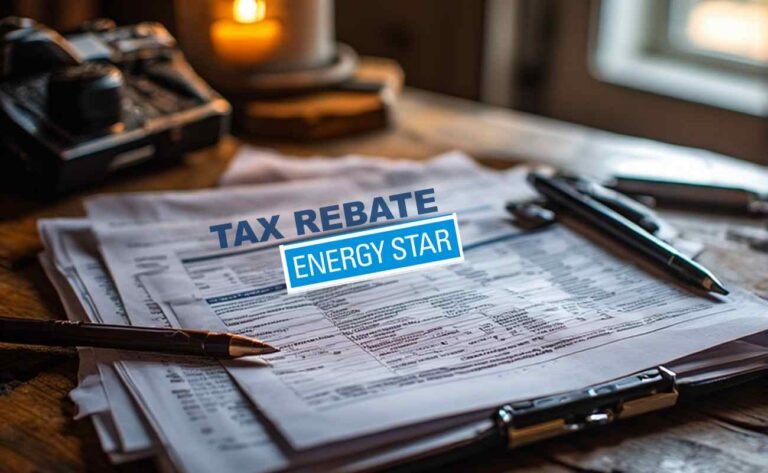New Solar Panel Tax Credit: Get 50% Back on Installation Costs
If you’re considering switching to solar energy in 2025, the federal solar investment tax credit offers a significant opportunity to reduce your upfront expenses. This incentive allows homeowners to claim 30% of qualified solar panel installation costs directly against their federal taxes, potentially saving thousands on a typical system. However, by combining this with state rebates, local incentives, and possible bonuses for certain projects, some users can achieve effective savings approaching 50% or more on total costs. With the credit set to expire for residential installations after December 31, 2025, due to recent legislative changes, now is the time to act and lock in these benefits before they vanish.
The residential clean energy credit, often called the solar ITC, covers expenses like panels, inverters, batteries, and labor for systems placed in service this year. Eligibility requires owning the system outright—no leases qualify—and having sufficient tax liability to use the credit. While the base federal rate stands at 30%, stacking additional programs from states like New York or California can boost your overall return, making renewable energy more accessible. Keep reading to explore how to maximize these savings through detailed lists, tables, and step-by-step guidance tailored for 2025.
Transitioning to solar isn’t just about tax breaks; it’s a smart move for long-term energy independence. Let’s dive into the specifics.
Understanding Solar Energy Tax Incentives in 2025
First off, you need to grasp what makes this credit “new” in the current landscape. Recent updates, including the phase-out acceleration under the One Big Beautiful Bill Act signed in July 2025, have created urgency. Homeowners must install and activate systems by year’s end to qualify for the 30% federal rebate on solar setup expenses. Businesses, on the other hand, can access bonuses that push the rate to 50% under certain conditions, like using domestic materials or locating in energy communities.
I recall helping a friend navigate this last year—he installed a basic rooftop system and shaved off nearly a third of his bill through the federal credit alone. It felt like a win, especially with rising utility rates. But for 2025, combining layers of incentives is key to hitting higher percentages.
Key Components of the Residential Solar Rebate Program
To make this straightforward, here’s a list of core elements you should know:
- Qualified Expenses: Includes solar photovoltaic panels, solar water heating equipment, inverters, racking, wiring, and on-site labor. Exclude any structural roofing unless it’s integrated solar tiles.
- Credit Calculation: Multiply your total eligible costs by 30%. For example, a $25,000 system yields a $7,500 credit.
- Non-Refundable Nature: Reduces your tax bill but doesn’t provide cash if it exceeds what you owe; carry forward excess to future years.
- Ownership Requirement: You must own the home and the system—renters or leased setups don’t qualify.
- Location Rules: Applies to primary or secondary U.S. residences; partial credit for part-time use.
- Integration with Other Aid: Subtract rebates or subsidies from your cost basis before applying the credit.
- Form to File: Use IRS Form 5695 with your 2025 tax return.
This setup ensures you get the most out of your investment without complications.
Eligibility Criteria for Solar Installation Rebates
Not everyone qualifies, so check these points carefully. Meeting them positions you to reclaim a substantial portion of your renewable energy setup costs.
Here’s a detailed eligibility checklist:
- Taxpayer Status: You file federal taxes and have liability—exempt if you’re tax-exempt.
- System Installation Date: Must be placed in service between January 1, 2022, and December 31, 2025.
- Home Ownership: Own the property; applies to houses, condos, co-ops, houseboats, or mobile homes.
- System Type: Certified solar electric or heating systems meeting Energy Star or equivalent standards.
- No Business Use Over 20%: If higher, prorate the credit for personal use only.
- Battery Storage Add-On: Eligible if capacity is at least 3 kWh, boosting overall efficiency.
- No Prior Claims: Can’t claim for previously credited systems.
If you tick these boxes, you’re set. Otherwise, explore alternatives like community solar programs.
Common Exclusions from Solar Tax Rebates
Avoid pitfalls by knowing what doesn’t count:
- Leased or PPA (power purchase agreement) systems.
- Repairs or maintenance on existing setups.
- Off-grid systems not connected to your home.
- Pool or hot tub heating solely.
- Passive solar designs without mechanical components.
- Interest or financing fees.
- Utility subsidies unless taxed as income.
Steering clear of these keeps your claim clean.
How to Calculate Your Solar Panel Cost Recovery
Calculating your potential savings is simple. Start with your total project cost, subtract any upfront rebates, then apply the 30% rate.
For clarity, consider this table of example scenarios based on average 2025 costs:
| System Size (kW) | Total Cost Before Incentives | Federal Credit (30%) | Estimated State Add-On (Varies) | Total Effective Savings | Net Cost After Savings |
|---|---|---|---|---|---|
| 5 kW (Small Home) | $15,000 | $4,500 | $1,500 (10% average) | $6,000 (40%) | $9,000 |
| 7 kW (Average Home) | $21,000 | $6,300 | $2,100 (10%) | $8,400 (40%) | $12,600 |
| 10 kW (Large Home) | $30,000 | $9,000 | $4,500 (15% in high-incentive states) | $13,500 (45%) | $16,500 |
| 15 kW (With Battery) | $45,000 | $13,500 | $6,750 (15%) | $20,250 (45%) | $24,750 |
Note: State add-ons vary; some like Massachusetts offer up to 15%, pushing totals closer to 50%. Use tools from Energy.gov for precise estimates.
This table shows how stacking incentives amplifies returns. In states with robust programs, you might even hit 50% effective recovery on solar deployment expenses.
Steps to Claim Your Renewable Energy Tax Refund
Claiming is straightforward if you follow these steps. Don’t rush—accuracy matters.
- Gather Documentation: Invoices, receipts, and certification proofs for equipment.
- Determine Qualified Costs: Subtract rebates; include only eligible items.
- File Form 5695: Attach to your 1040; calculate credit in Part I.
- Apply Carryover if Needed: If excess, note for next year’s return.
- Submit by Deadline: April 15, 2026, or extension date.
- Consult a Pro: Use tax software or a CPA for complex situations.
- Track State Claims: File separately if applicable.
Following this ensures you secure your share of clean energy cost reductions.
Potential Challenges and Solutions in Claiming
Issues arise, but solutions exist:
- Challenge: Insufficient Tax Liability – Solution: Carry forward to future years.
- Challenge: Rebate Subtractions – Solution: Verify if rebates are taxable.
- Challenge: Audit Risks – Solution: Keep records for seven years.
- Challenge: State Variations – Solution: Check DSIRE database for local rules.
- Challenge: End-of-Year Rush – Solution: Install early to avoid delays.
Addressing these head-on smooths the process.
State-by-State Solar Incentive Breakdown for Maximum Savings
While federal offers the base, states provide the boost to reach higher percentages. Some combine to offer effective 50% back on photovoltaic system installations.
Here’s a table highlighting top states for additional solar rebates in 2025:
| State | Additional Credit/Rebate | Max Amount | Stacking Allowed? | Effective Total with Federal (Up To) |
|---|---|---|---|---|
| California | Up to 20% rebate via SGIP | $5,000 | Yes | 50% |
| New York | 25% state tax credit | $5,000 | Yes | 55% (capped) |
| Massachusetts | 15% state credit + rebates | $1,000 + varies | Yes | 45% |
| Colorado | Various local rebates | Varies | Yes | 40% |
| Texas | Property tax exemptions + rebates | No cap | Yes | 35-40% |
| Florida | Sales tax exemption + rebates | Varies | Yes | 35% |
| Arizona | 25% state credit | $1,000 | Yes | 55% (capped) |
| Nevada | Up to $3,000 rebate | $3,000 | Yes | 40% |
Source: Adapted from DSIRE and state energy offices. For instance, in California, pairing the federal 30% with local rebates can net 50% off solar array setup fees. Check IRS.gov for federal details.
This variation means researching your location pays off big time.
Business vs. Residential: Achieving 50% Solar Credit for Commercial
For businesses, the “new” aspect shines brighter. The Section 48 ITC starts at 30% but adds bonuses: 10% for domestic content, 10% for energy communities, reaching 50%.
Business eligibility list:
- Base Rate: 30% for projects starting construction by July 4, 2026.
- Domestic Bonus: +10% if 100% U.S.-made steel/iron, 40% manufactured products.
- Community Bonus: +10% in low-income or fossil fuel-dependent areas.
- Other Add-Ons: Up to 20% more for prevailing wages/apprenticeships.
- Storage Inclusion: Batteries qualify independently.
- Depreciation Benefits: Combine with MACRS for faster write-offs.
- No Size Limit: Applies to utility-scale too.
Businesses can truly get 50% back on clean power installation outlays. If you’re a homeowner with a side business, explore hybrid claims.
Comparison Table: Residential vs. Commercial Solar Credits
| Aspect | Residential (Section 25D) | Commercial (Section 48) |
|---|---|---|
| Base Percentage | 30% | 30% |
| Max with Bonuses | 30% (plus state) | 50%+ |
| Expiration | Dec 31, 2025 | Phased after 2027 |
| Eligible Costs | Home systems only | Any scale, including storage |
| Carryover | Yes, indefinite | Yes, with limits |
| Filing Form | 5695 | 3468 |
This highlights why businesses might see higher returns on sustainable energy investment rebates.
Maximizing Savings: Pairing with Other Financial Aids
To push toward 50%, layer incentives. For example, the federal credit pairs well with net metering, where you sell excess power back.
Additional layering options:
- Utility Rebates: Many offer $0.50-$1 per watt.
- SRECs: Sell renewable energy certificates in participating markets.
- Loans and Financing: Low-interest green loans don’t affect credit.
- Inflation Reduction Act Remnants: Though scaled back, some efficiency credits remain.
- Local Grants: Cities like Denver provide extra funds.
Combining these can effectively halve your photovoltaic panel deployment costs. Just ensure no double-dipping on subsidies.
Long-Term Benefits Beyond the Tax Break
Once installed, savings continue. Expect 25-30 year lifespans with warranties.
Benefit list:
- Energy Bill Reductions: Cut monthly costs by 50-90%.
- Property Value Boost: Homes sell 4% higher with solar.
- Environmental Impact: Reduce carbon footprint by tons annually.
- Energy Independence: Less reliance on grid fluctuations.
- Hedge Against Rate Hikes: Lock in low costs amid rising energy prices.
- Warranty Coverage: Most panels guaranteed for 25 years.
- Maintenance Ease: Minimal upkeep needed.
These perks make the initial rebate even more valuable.
ROI Calculation Table for Solar Systems
| Investment Amount | Annual Savings (Avg) | Payback Period | 25-Year ROI (After Credit) |
|---|---|---|---|
| $15,000 | $1,200 | 8-10 years | 200% |
| $21,000 | $1,800 | 7-9 years | 250% |
| $30,000 | $2,500 | 6-8 years | 300% |
| $45,000 | $3,500 | 5-7 years | 350% |
Assumes 30% credit applied upfront. Real ROI varies by location and usage.
Frequently Asked Questions on Solar Tax Incentives
Questions pop up often, so here are answers:
- Can I get 50% exactly? For residential, not federally, but stacking can approach it. Businesses yes with bonuses.
- What if I install in 2026? No federal credit; rely on states.
- Does battery storage qualify alone? Yes, at 30%.
- Are there income limits? No, open to all taxpayers.
- How do I find installers? Use certified pros via SEIA directory.
- What about audits? Rare, but keep docs.
- Can non-citizens claim? If they file U.S. taxes, yes.
Related Financial Guides
If solar ties into broader financial planning, check out this guide on IRS refunds for more tax tips. For stimulus-related updates that might complement energy savings, see the fourth stimulus check details.
Wrapping Up: Act Now on Solar Savings
In summary, while the federal solar credit offers 30%, smart stacking can get you close to 50% back on installation. With the deadline looming, consult pros and file accurately. It’s a practical step toward sustainability.







